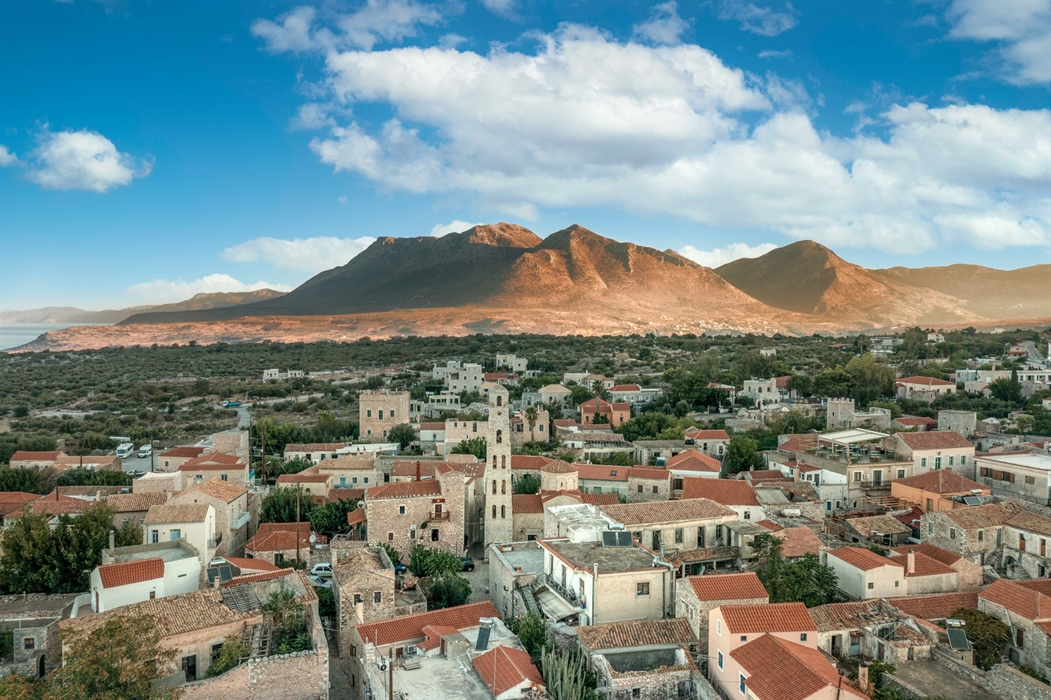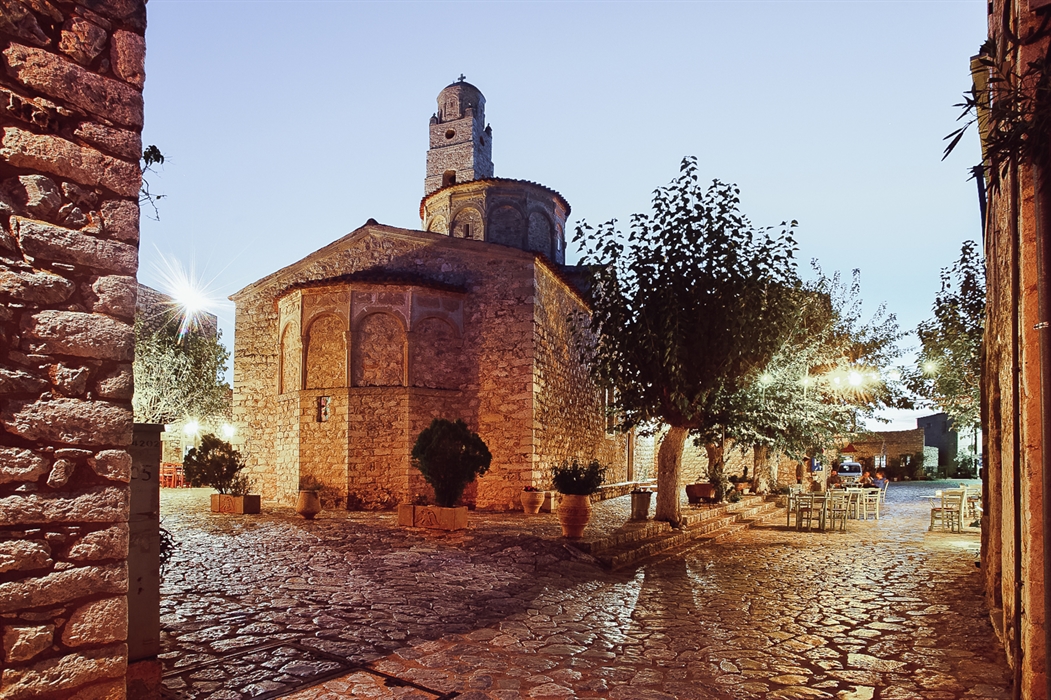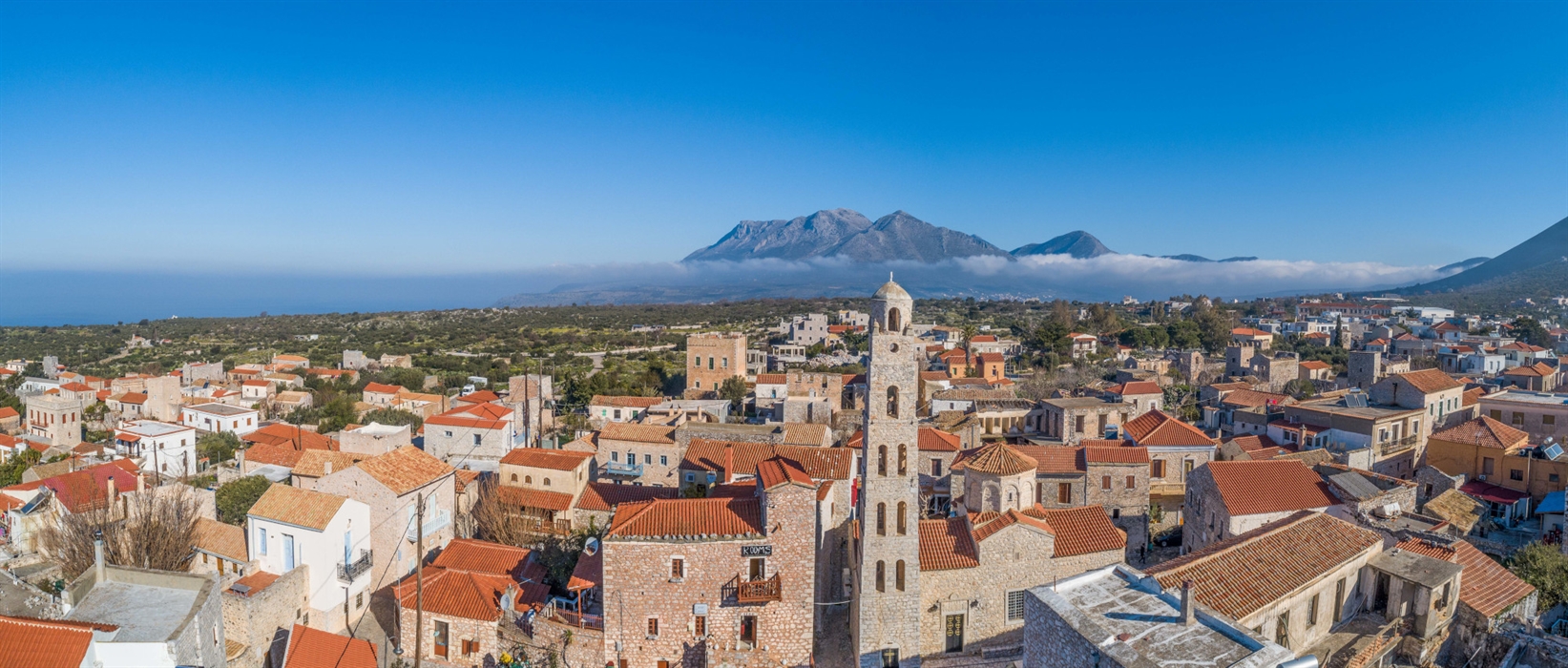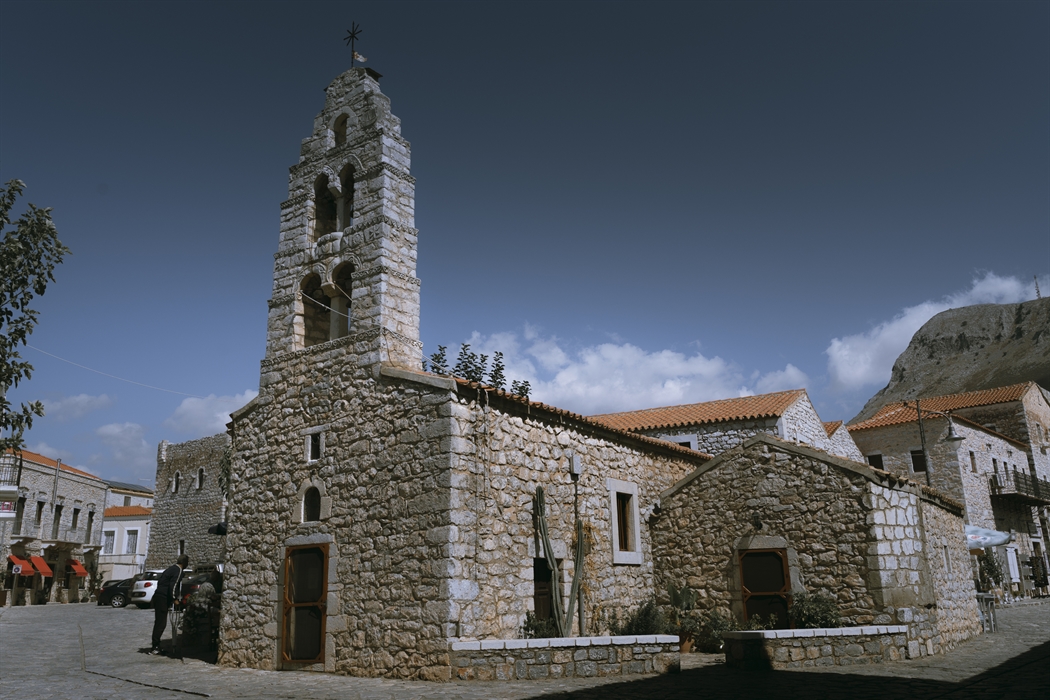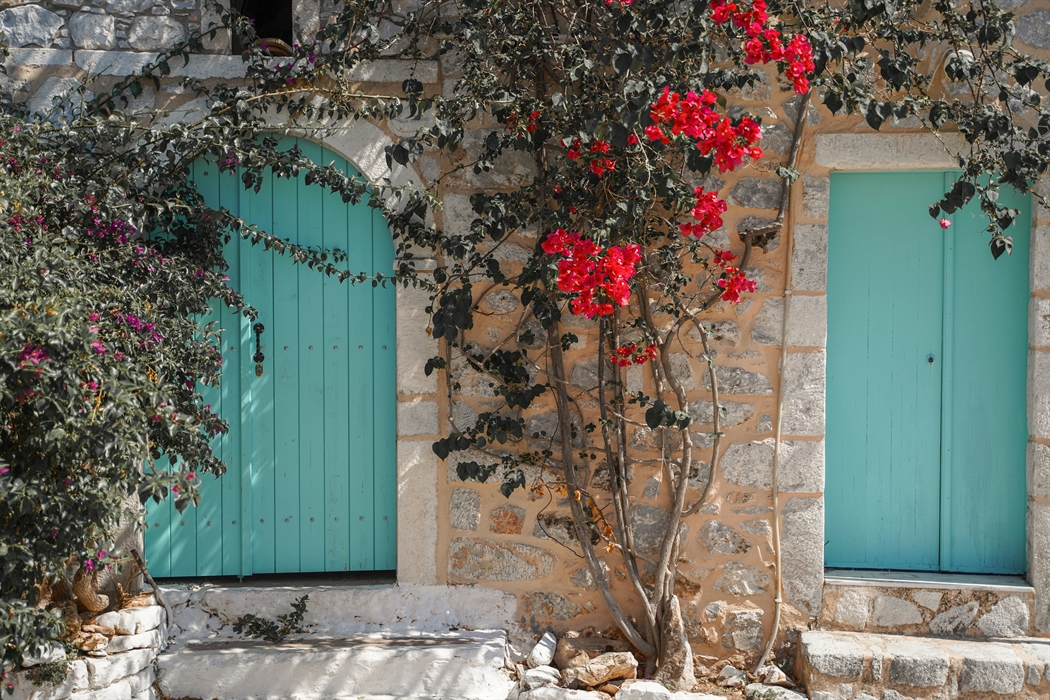Areopoli
With its Maniot tower houses, narrow streets, views of the sea, barren landscape, remains of megalithic buildings and amazing churches with their beautiful wall paintings, Areopoli is like a microcosm of the Mani. This stone-built village has an impressive history and comes alive in summer. It is also home to the Pikoulakis Museum which has a permanent exhibition entitled "Stories of Religious Faith in Mani".
With its Maniot tower houses, narrow streets, views of the sea, barren landscape, remains of megalithic buildings and amazing churches with their beautiful wall paintings, Areopoli is like a microcosm of the Mani. It is at the entrance to the Mani, on the rocky hill that stretches at the foot of Mount Profiti Elias, and in the past it controlled the main road between south and southwest Mani. Its port is Limeni.
The village has a glorious history, and was the seat of the powerful Mavromichalis family. The villages’ most famous son was Petrobey Mavromichalis, a Maniot chieftain and the last bey (ruler) of the Mani. He was also one of the most important figures in the 1821 War of Independence and later became a politician. There is a bronze statue of him in the large central square which reminds us that Petrobey launched the 1821 revolution here in his hometown on March 17 -eight days before it officially started.
If you visit Areopoli in winter, you’ll find a quiet and even austere village. But if you go in the summer it’s a different story. The squares with the churches and the cobblestones are bright and cheerful thanks to the colourful tables and chairs at the traditional coffee bars, postmodern cafes, snack bars and restaurants. Music seems to be everywhere, and Greek and foreign visitors add a vitality to this stone-built village with its imposing tower houses – some ruined, some restored - on almost every cobblestone street.
Areopolis has been declared a traditional listed settlement -and rightly so. Everything here bears witness to its heyday in the first decades of the 1800s when it gradually expanded to the east, and became more of a town than a village.
The only way to really get to know Areopoli and to catch a glimpse of its soul is to walk around it; each rough stone will let you into more of its secrets. But if you want to plan your wanders, you might want to visit some of these sites on your way.
Towers/Tower houses.
- The Stylianos Mavromichalis fortress complex, with a residence, a tower and a wall. It is one of the most important examples of a fortified residence in Mani.
- The Koutrakos tower house which was built at the end of the 18th century. It was used by the Mavromichalis family in 1826 to defend against Ibrahim Pahsa of Egypt when he landed in neighbouring Diros.
- The Kapetanakos Tower. This central tower is a typical example of Maniot architecture. It was built in 1865, restored by EOT and now operates as a guest house.
- The Pikoulakis tower next to Agios Ioannis church has been declared a Historical Listed Monument and is now a museum with a permanent exhibition entitled "Stories of Religious Faith in Mani". It presents and interprets the religious monuments which are a dominant element of the Maniot landscape. (Tel. 27330 29531).
Religious monuments.
-The Taxiarches, Areopoli cathedral, in Platia 17 Martiou 1821. This church was built in the second half of the 18th century by the Mavromichalis family, and the ornate multi-storey bell tower, the emblem of Areopoli, was built in 1836. It is the tallest belltower in the Mani. The façade of the tower is decorated interesting stone carvings and with the symbols of the zodiac -a theme which is close to the heart of the Mani as it is considered to be one of the links that connects the ancient world with Christianity.
-The double church of Panagia and Agios Charalambous, in Niarchakou Square, with frescoes from 1869 and an interesting stepped belfry with stone carvings.
-The small churches of Agia Triada (built before the 17th century), Agia Kyriaki and Agios Petros, in the old western part of the city.
- Ai Yiannis O Prodromos (early 18th century) the Mavromichalis’ church, with exceptional frescoes from 1746 and 1868.
- Panagia Georyianiki (mid-18th century) another Mavromichalis church, with folk art stone carvings and an iconostasis with remarkable icons.
On the outskirts of the city is Palerimos with the old Monastery of the Dormition which has beautiful frescoes. A little further on is one of the city's oldest residential areas, as evidenced by the remains of megalithic structures.
Areopoli is 26 km from Gytheio.
The Tainarius man
Research in the Apidima cave in the steep rocks to the west of Areopoli yielded very important data on the remotest Prehistory of the Peloponnese and on the Paleoanthropology of the Greek area in general. Among other things, two skulls that were dated as being 100-300,000 years old were found. The excavators gave them the name Homo (sapiens) taenarius -that is, Tainarius man.
Location
Find the destination on the interactive map below.
Categories
Σχετικό περιεχόμενο χρηστών (UGC)
Ενημερωθείτε για ενδιαφέροντα θέματα γύρω από τον προορισμό μέσα από το περιεχόμενο των χρηστών μας
Discover 7 hidden gems of the Peloponnese
Many of you may have already visited some of the most renowned attractions…
TOP 10 archaeological museums in the Peloponnese
Olympia, Mycenae, Epidaurus, Diros Cave, Ancient Corinth, Messene and…
TOP 10 Castles in the Peloponnese
Castles galore! Mystras, Monemvasia, Palamidi, Methoni, Koroni,…
Newsletters
- About us
- FAQ's
- Map
- Tourism information centers
- Disclaimer
- Sitemap
- Our brand
- Media roum
- Adding your bussiness
- Corporate
- MICE

Peloponnese. Greece beyond the obvious





Design and creation from Cosmote
Marinas and Moorings
Diving centers
Get inspired
- Media gallery
- Blog
- The Peloponnese in the media
- Your feedback
- Users' general content
- Users' local products
- Users' events content
- Ask a local
More
- Accommodation
- Travel agencies
- Restaurants
- Services
- Destinations Map
- Weather
- Public transport
- Events
- Frequently asked questions
- Useful phones
- B2B
- Destination Data
- Contact

